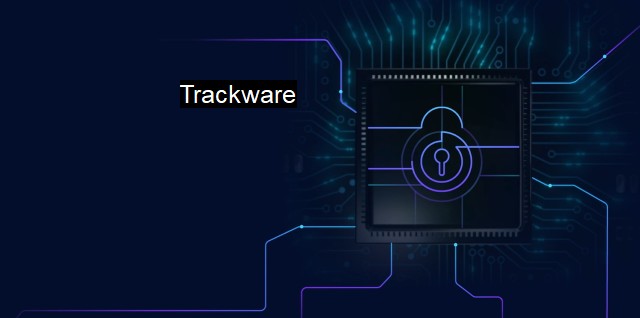What is Trackware?
The Rise of Trackware: Understanding and Protecting Against Digital Threats
Within the cybersecurity and antivirus industry, the term "trackware" encompasses a suite of nefarious software modules designed specifically to track and record a user's online and offline activities. While trackware is not often associated with catastrophic harm, it falls in the gray area between admissible software and outright malware because of its invasiveness and potential risk of privacy violation for the user.Trackware is engineered to monitor and keep a trail of users' behavior, information, and data interactions without their explicit knowledge. It includes keyloggers, cookies, system monitors, tracking cookies, and other specific software programmed to track a user's habits. Such programs record keystrokes, passwords, credit card numbers – and equally sensitive information – storing this data without the user's knowledge or consent.
A synchronous rise in internet usage and trackware indicates how perfidious users harness the digital world to invade users' privacy and monetize on the gleaned and stolen data. While trackware creators and distributers argue that they help businesses customize user experiences, improve services, and aid in tech support, these elements also pose significant privacy risks and can lead to incidents of identity theft, fraud, and financial loss.
For instance, keyloggers form a traditional trackware category that logs every keystroke, capturing passwords and payment card details, which are then sent back to the source. System monitors are another trackware category that covertly watches and records all the user's software activities. spyware is connected to tracking cookies, web beacon tags injected onto a webpage to monitor the user's behavior.
Beyond tracking online behavior, trackware can be incredibly invasive, collecting a plethora of personally identifiable information (PII) such as email ID, phone number, physical address, and IP address. The capture and abuse of such data can expose users to a diverse set of threats ranging from unwanted marketing to potentially malignant cyber-attacks.
Often free software downloads are laced with trackware; hackers take advantage of consumer’s demand for free software, embedding trackware in license agreements that unsuspecting users willingly approve, resulting in surveillance and potential misuse of collected personal information.
Although these arguments paint trackware in entirely hazardous hues, trackware can be benign in some instances. The information collected by legitimate businesses and enterprises can be used to improve customer service, user experience, and create personalized marketing campaigns often benefiting buyers and sellers.
To monitor and maintain trackware installations, it is necessary to have powerful, state-of-the-art cybersecurity machinery. Users should employ a focused and robust antivirus solution designed to detect and purge trackware continuously. Beyond that, informed use of software from safe, verified, and reputable sources, coupled with prudent handling of sensitive information, forms the bedrock of a strong defense strategy against trackware infiltration.
Trackware, commonly confused with proteinaceous terminology amid cyber conversation, fits very much into the broad discourse on web safety. Users must stay vigilant against such threats, be mindful of their behavior, and adopt measures such as robust antivirus suites to safeguard their privacy and avoid potential cyber threats.
Trackware is a form of invasive software that gathers and tracks user data and behavior, often without their knowledge or consent. While its uses vary, our priority should be to guard ourselves against the potential threats it poses and use software responsibly, with a strong emphasis on vigilance and utilization of effective cyber threat defense solutions.

Trackware FAQs
What is trackware?
Trackware is a type of malicious software that is designed to track a user's online activity and collect personal information without their knowledge or consent. It is often used by cybercriminals to steal sensitive information such as passwords, credit card details, and browsing history.How does trackware infect a computer?
Trackware can infect a computer through various means, such as downloading infected files or software, clicking on malicious links or ads, or opening infected email attachments. It can also come bundled with legitimate software or be hidden in fake software updates.What are the signs of a trackware infection?
Some signs of a trackware infection include slow computer performance, pop-up ads, unwanted toolbars, browser redirects, changes to browser settings, and the appearance of unfamiliar programs or files. If you suspect you have a trackware infection, it's recommended to run a full virus scan with your antivirus software.How can I protect my computer from trackware?
To protect your computer from trackware, it's important to keep your antivirus software up to date, avoid downloading software or files from untrusted sources, be cautious when clicking on links or ads, and use a pop-up blocker in your browser. It's also recommended to regularly back up your important files and data, so that they can be easily recovered in case of a trackware attack.| | A | | | B | | | C | | | D | | | E | | | F | | | G | | | H | | | I | | | J | | | K | | | L | | | M | |
| | N | | | O | | | P | | | Q | | | R | | | S | | | T | | | U | | | V | | | W | | | X | | | Y | | | Z | |
| | 1 | | | 2 | | | 3 | | | 4 | | | 7 | | | 8 | | |||||||